
Bianchi S9 | Vintage
Words Remigio Camilla / Photos Alessandro Marrone
It’s 1934 and the Bianchi S9 enters the scene, equipped with a 1,452 cc in-line 4-cylinder engine. Under this name, the Bianchi workshops presented a new model that was very interesting compared to the previous S5, due to all of its characteristics and the improvements introduced. A car of great class in terms of mechanics, refinement, rich instrumentation, robust and a well-finished bodywork, with a discreet, non-flashy elegance. A car of substance dedicated above all to the wealthy classes, those who in the Milan of the time were defined as “i padrun de ca” (home owners), but also much appreciated by nobility. A car perfectly in line with the production and philosophy of Edoardo Bianchi.

In the advertisements of the era it was defined as an “economical luxury utility car” and its qualities proclaimed “perfection, distinction, quality, economy and safety”. Definitely a luxury car, but certainly with a price that is not exactly that of a small car, if you compare it with the FIAT Balilla, the first proper small FIAT model sold for 11,000 Lire, the S9 in the basic version cost double and almost triple that in the Coupe and Cabriolet versions. With the S9 of medium displacement, Bianchi had tried to enter the popular car segment, entering into competition with the Lancia Augusta and the Artena – with a much larger displacement – and to compete with the new 6-cylinder FIAT 1500 which will be released in the following year. The new Bianchi was equipped with a very stiffened and lowered chassis which allowed it to be dressed with different types of bodywork, Sedan, Cabriolet, Coupe, in order to be able to embrace a wide market segment. All versions had names that linked to splendid Italian seaside and mountain locations: Mendola, Imperia, Rimini, Riccione, Dolomiti. However, there was no shortage of models dedicated for work use such as the Ambrosino light truck, the van version also requested by Poste Italiane, the transformation into an ambulance and the minibus dedicated above all to hotels. A particular version was created to follow the BIANCHI cycling racing team in the Giro d’Italia and the various races.



This model was still used after the war following Fausto Coppi. A particular torpedo version called Riccione was supplied to the Military Militia and a Colonial model was also prepared according to the specifications required by State, equipped with particular features such as double spare wheels, oversized tires and additional fuel tanks. The time frame in which the S9 was produced is quite limited, from 1934 to 1939 as due to Italy’s involvement in the Second World War, the Bianchi factories were used for the production of military vehicles and supplies. Their limited production in time was also due to serious economic crisis that our country entered. The car was produced in two subsequent series, in 1938 a more aerodynamic front was introduced through the adoption of a curved and inclined radiator grille compared to that of the first series which was more rigid, flat and less inclined.







In the Cabriolet Dolomiti version the roof is slightly lower, slimmer and curved in the rear profile, on all versions it was possible to have the bodywork with two-tone coloring. Information relating to this model are very limited, unfortunately the entire Bianchi archive of the time was completely destroyed because of an air raid during the Second World War. Interesting sources of consultation are the book: “From BIANCHI cars to Autobianchi” written by Sandro Colombo for the Automotoclub Storico Torino ASI bookshop and “Edoardo Bianchi” written by Antonio Gentile, President of the Bianchi Historical Registry. The latter is very rich in news regarding the bicycle and motorcycle sector, also and above all due to their use and involvement on road and track with famous drivers. On the S9, all the technical data relating to the chassis, engine, various mechanical parts and types of bodywork are certain and documented, also through the press and advertising of the time. The model is pretty rare already in the sedan version, becoming very rare and almost impossible to find in the Coupe versions called Faux Cabriolet tipo Mendola and Cabriolet Dolomiti, therefore, as often happens with rare models, the information made available by collectors and owners of the model who over time have collected material, information from previous owners, carried out important restorations and in most cases they know each other personally with a mutual exchange of details useful to them, especially given the small number of S9s still in existence. Of the Faux Cabriolet Mendola version which corresponds to the Coupe, only one example seems to exist, while in the Cabriolet Dolomiti version, four belonging to the first series and three from the second series with aerodynamic inclined front apparently survive.
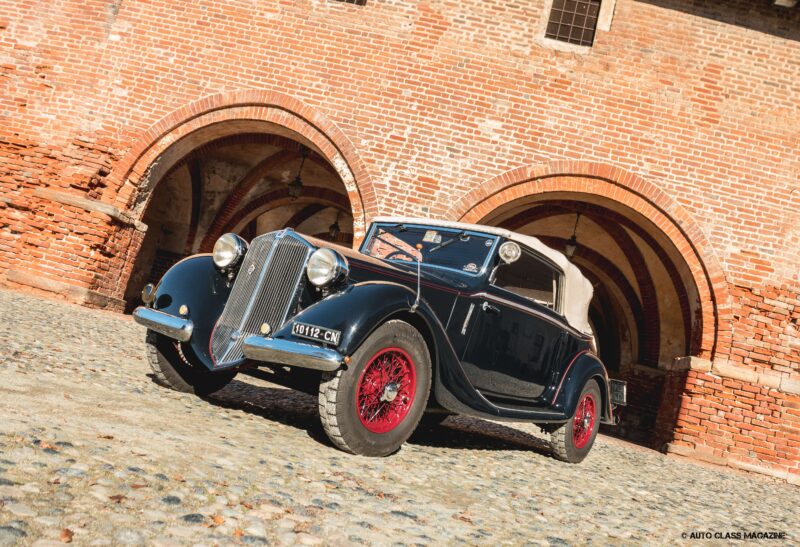




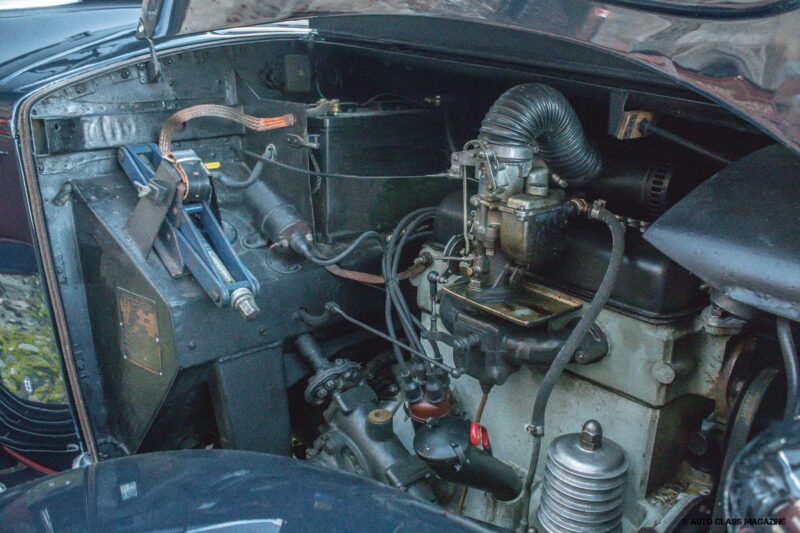

Having the two models at disposal and being able to fully get to know them in all their details, in their elegance, in the preciousness of the materials used for the interiors was a truly exciting and exciting experience. Our friend Valerio, attentive and refined collector, lucky owner of the two cars, awaits us in the splendid setting of the Staffada Abbey founded in the 12th century, one of the most important and largest medieval buildings in Piedmont near Revello, in the province of Cuneo. The two cars, which belonged to important figures of the era, are now united by an interesting story that is intertwined in recent years relating to their recovery and which Valerio tells us.

The Cabriolet version called Dolomiti, in chronological order, is the first he manages to conquer in the true meaning of the term, because it is the car that has followed him until today, a desire developed as a child when his father took the family on a business trip in Busca. Once he randomly saw the S9 he identified it from afar with extreme ease due to the now out of time line, remaining bewitched and dreaming of one day being able to have it for himself. The car belonged to a gentleman from Busca who had purchased it in 1957 from a pharmacist from Cuneo who in turn had purchased it in 1938.



The car had been used until the early 70s of the last century, then left in custody at a FIAT dealership following the purchase of a new car. A few years pass and the dealership closes. The S9 was placed outdoors under the trees, luckily it was taken back a short time later by its owner who rearranged it and used it for some wedding services, being an elegant car with the possibility of being open. At the beginning of the 2000s it was put up for sale, Valerio couldn’t let it slip away and finally managed to buy it, the satisfaction was great, his childhood dream came true, but he didn’t know that from that moment on a series of pleasant happenings would await him.” Coups au cœur”. After the purchase he began to read everything ‘bout the car, carried out a search through the Reale Automobile Club of Italy, discovering that he owned a very important S9 Dolomiti because its first owner was Edoardo Bianchi himself, the founder and owner of Edoardo Bianchi Società Automobili e Velocipedi.

The car’s first registration year was 1935, thus belonging to the first series characterized by a more squared and vertical radiator grille. A philological restoration is carried out with great attention on every detail, also due to the historicity of the car, linked to its first important owner. The engine with all the mechanics is completely revised, as is the chassis. Fortunately, the bodywork did not present any major problems, the sheet metal was well preserved and free of rust. After the appropriate preparatory work, it was repainted in accordance with the colors and enamels used at the time. The bumpers were completely rebuilt and replaced as they had changed over time and did not correspond to the original ones, just as the front headlights were removed for the same reason. Valerio explains to us that the original chromed brass headlights made in the Autarctic period, due to the poor quality of the material used, tended to fall apart and had been replaced with those of the FIAT 1500 6C. Through a patient but very successful search, he manages to find two pairs of the original headlights. Particular attention and care was dedicated to the interior, where all the precious briar wood finishes of the dashboard and doors were recovered. The leather covering of the seats and door panels was completely removed and taken to the Foglizzo company in Turin, an expert in leather since 1921. Here the same original color was reproduced on new leather and the subsequent weave was created using plates of molding of the time.


The spoked wheel rims fitted were the original Rudge-Whitworth ones, with a chrome finish, on which Michelin X tires with a too reduced shoulder were fitted. Removing them revealed that the inside of the rims, the channel, was painted dark red, a color coordinated with the interior of the car. Therefore they were chromatically restored to their original state and equipped with new high shoulder tyres, an operation which gave the Dolomiti back the right and correct set-up and elegance. The aesthetic research of coordinating the interior with the exterior through the wheel rims is a very interesting detail of the S9, a research of refined elegance derived from Art Deco. If we observe the car from the outside, when the long doors are opened, the leather panel that covers them visually connects directly with the color of the wheel rims, obtaining continuity with the leather seats and the central part of the dashboard where the instrumentation is housed.

In 2004, during the restoration of the Cabriolet Dolomiti, Valerio received news of a Bianchi pickup truck abandoned under a shed. Curiosity is obviously great and even in this case he wastes no time and starts a new mission. At this point a series of events that are almost unbelievable occur. Now a connoisseur, but supported by the documents of the vehicle in his possession, he discovered that it was a first series S9 registered in 1936 and transformed into a pickup truck in 1954. In the post-war years these transformations from car to pickup truck or van were quite usual, as there was a great need for working vehicles. Valerio sees a possible source of spare parts for the Cabriolet Dolomiti. Once the truck has been transported to the body shop, all the non-original inconsistent parts are removed, then the body with all the various supports, discovering that the door anchoring struts had not been modified in the cutting of the cab, but were the original ones of the car, simply moved forward. The doors had been cut to obtain the longest possible body, all details that immediately caught Valerio’s attention, who also in this case decided to conduct a series of research at the Reale Automobile Club of Italy.



At this point of the story, if it were a movie there would be the classic twist, in fact with equally unpredictable surprise, he discovers that the pickup truck was originally a Faux Coupe Mendola model, but that’s not enough: its first owner had been the famous Designer of Rista fabrics Ugo di Trivero who in 1936 founded the Biellese wool mill “Ugo Rista & C”. His fabrics were very famous and advertised in women’s fashion magazines. Ugo Rista was always a guest of honor at the most important fashion shows and with these premises he began a new extraordinary adventure, a new restoration that was decidedly more demanding than the previous one, where in addition to the philological recovery of what remained, it was necessary to reconstruct what had been removed during transformation into a pickup truck.
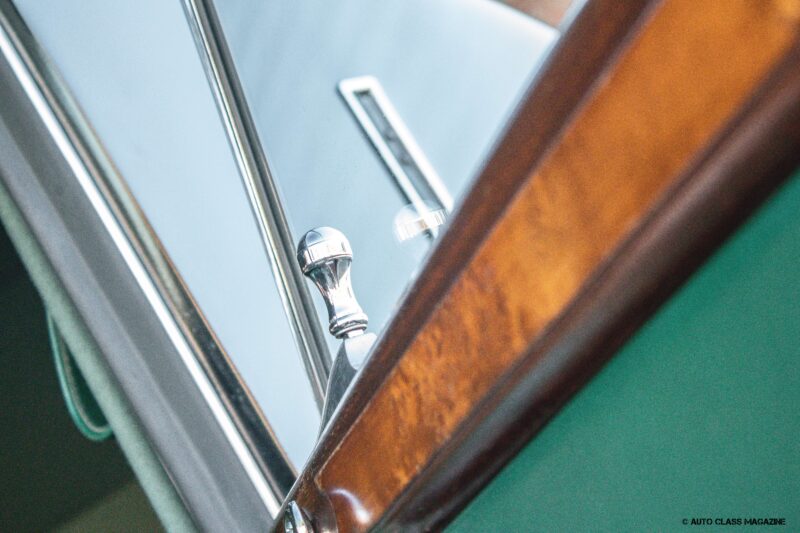





The parts of the bodywork that had remained intact included the entire front end, the front and rear fenders, the platform that joins them and a part of the cab. The tail part was missing, the central one between the two rear fenders and a part of the cab, the front headlights were no longer the original ones as they had been replaced and the bumpers were rebuilt as they were missing. With a lot of patience, professionalism and passion he rebuilt the structural parts of the missing bodywork in ash wood and the related metal plating, having as its model the Cabriolet version which differed only in the upper part corresponding to the roof of the car. The doors, reduced in length, have been restored to their correct shape and size, the Rudge-Whitworth spoked rims have been restored as well, recovering the original green color in combination with the leather interior and correct tires were fitted. The bodywork, having completed all the laborious work using the same procedures of the time, was completely repainted respecting the original color.
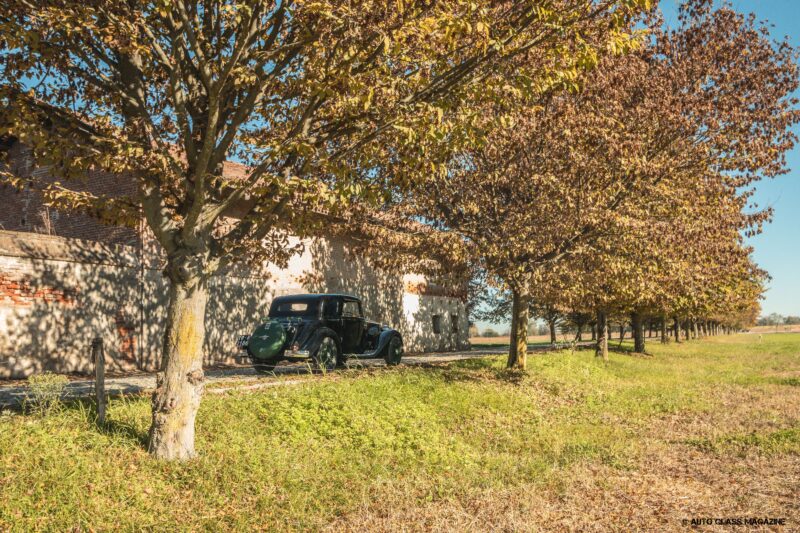
Equally challenging the recovery of the interior with all the burl wood finishes, quite worn by time and carelessness in use given that it was a work vehicle. For the seats and upholstery, the Foglizzo company followed the same procedure by taking samples of leather still present and reproducing the color and texture corresponding to the original on new leather. At the same time, the engine and all the mechanics, including the chassis, were completely refurbished. If the S9 Cabriolet has been pursued by Valerio since he was a child, it almost seems that the Coupe, after having faced the shame of being transformed into a pickup truck, has patiently defied the mistreatment, hard work, the neglect of time and has waited with trust someone who could bring it back to its prestigious past. Today it has returned being the luxurious Faux Cabriolet Mendola from 1936 with which designer Ugo Rista di Trivero probably reached important fashion shows.
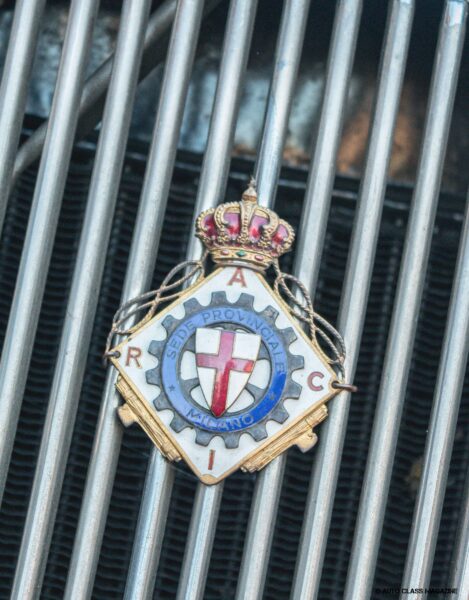


Among the technical characteristics of the S9, Bianchi highlighted an elastic mounting system of the engine on the frame, through the interposition of 5 rubber pads and many anchoring points such as to allow the engine to have a certain degree of oscillation, minimizing vibrations of the same. The bodywork was fixed to the chassis through eight protected support points, with the interposition of felt pads with the function of further reducing vibrations coming from the chassis. Very low pressure Pirelli Aerlex tires were mounted on the Rudge-Whitworth spoked rims. The engine is equipped with overhead valves, its petrol supply happens courtesy of a Stromberg carburetor and developed a total of 42 horsepower. The gearbox has four gears plus reverse, its maximum speed is in line with those of the competition at 100 kph.


Like the Lancia Augusta, it is equipped with free wheel in order to optimize consumption. On the road it proves to be very comfortable and silent with excellent handling and road holding. The bodywork of the S9 is composed of a mixed system, made with an ash wood structure seasoned for a year, to which suitably shaped sheet metal panels were fixed, thus obtaining a rigid and at the same time constructively ductile body, such as to allow any changes during construction without weighing too much on costs. The entire preparation procedure before painting was also very accurate. Three coats of primer were applied followed by three steps of grouting, three of pumicing followed by the application of nitrocellulose enamel and finally polishing.

The use of the S9 in racing was very limited. There is rumor of a participation at the 27th edition of the Targa Florio which took place on 20 December 1936, with an eighth place thanks to driver Sergio Matrassa. An edition of the Targa Florio which was held with notable problems and financial difficulties but at the same time stressed by the press which had a certain interest in it and where the organizers had decided to hold it at the last minute and in a reduced form.



